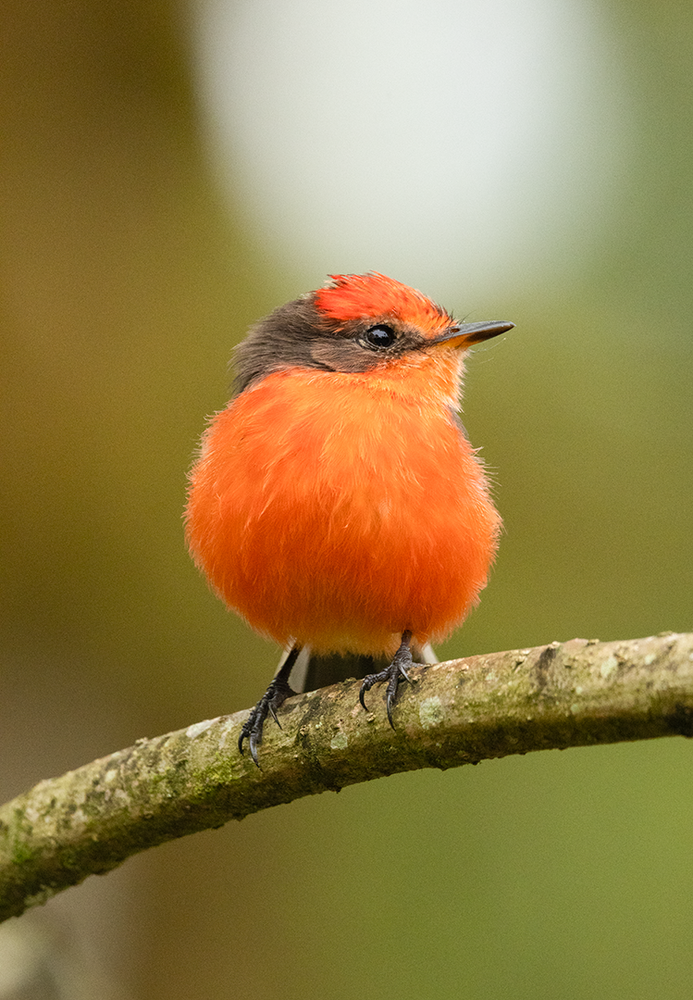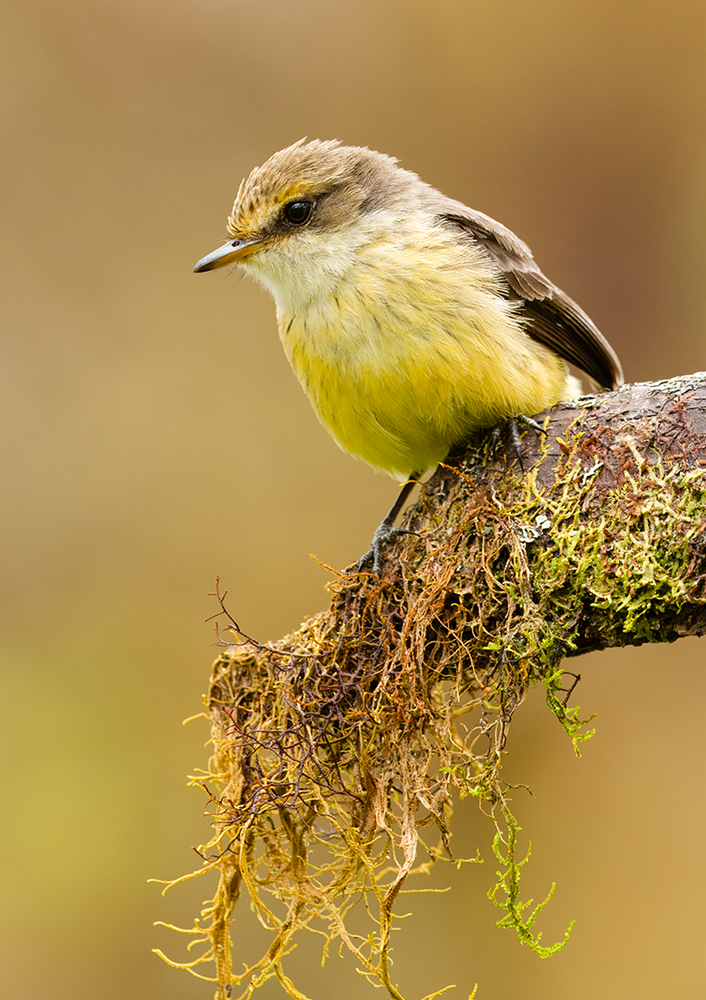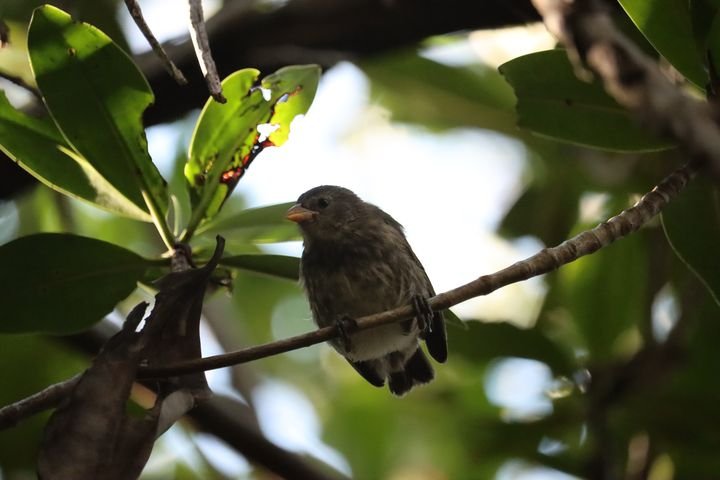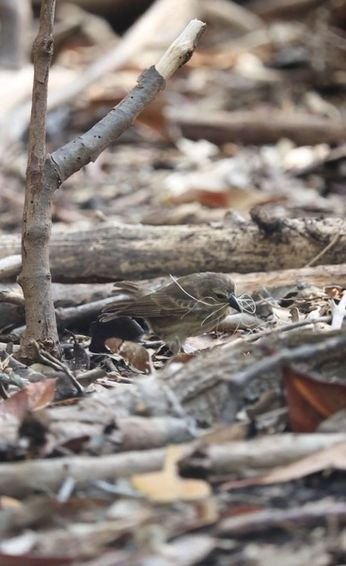Record Year for Vermilion Flycatcher Season and Advances in the Recovery of the Mangrove Finch
Galápagos, June 14, 2024 - The Galápagos land bird’s conservation project, by the Charles Darwin Foundation (CDF), has achieved significant milestones in 2024, thanks to the combined efforts of CDF scientists, Galápagos National Park Directorate (GNPD) rangers, and international collaborators.
Populations of two iconic bird species, threatened by invasive species such as the Philornis downsi fly and the blackberry, are showing promising signs of recovery and growth. These include the Little Vermilion Flycatcher (Pyrocephalus nanus) on Santa Cruz Island and the Mangrove Finch (Camarhynchus heliobates) on Isabela Island, underscoring the success of conservation initiatives.
Little Vermilion Flycatcher: A Record Year
The Little Vermilion Flycatcher population on Santa Cruz continues its upward trend in individual numbers. The 2024 season has been the most successful since the study began on Santa Cruz in 2018, with 15 fledglings. This remarkable success is attributed to ongoing habitat restoration, mainly the removal of blackberries and other invasive plants, and effective control of the avian vampire fly (Philornis downsi). These efforts have created a safer and more conducive environment for the birds' reproduction.
In comparison, 7 fledglings were recorded in 2022, while 2023 saw 12. The continuous improvement in breeding is evident, and predictions suggest that with proper management, this positive trend will continue. Before habitat restoration, breeding seasons produced only 1 or 2 fledglings, which almost led to the extinction of the Santa Cruz population. Now, improving each year, the population is expected to expand and double in the coming years, given CDF and GNPD continue the intense management of invasive species.
“Our team is very excited about the positive results. Finally, after several years of hard study, we have gained the knowledge of how to help the Little Vermilion Flycatchers and reverse their decline. There is now hope that the population will recover, become common again, and fly throughout Santa Cruz,” Explained David Anchundia, project researcher.


Mangrove Finch: Advances and Learnings
Simultaneously, the Mangrove Finch has also had a productive season. A team from the CDF, along with GNPD park rangers, worked intensively in this very remote area for seven weeks to monitor this species and conduct activities to protect it from rats, cats, and the avian vampire fly. In 2024, another successful year saw 11 fledglings, making a total of 27 fledglings over the last two breeding seasons.
This year, the team continued testing innovative methods to reduce parasitism by the avian vampire fly. They confirmed that the birds accepted sisal fibers treated with a low dose of larvicide and incorporated the material into their nests, a method promising to lower the number of avian vampire fly larvae. Additionally, the same larvicide was applied by injection and spraying on the exterior of some nests, techniques that also proved effective in protecting against the avian vampire fly.
Francesca Cunninghame, the project's principal investigator, commented, “Despite some challenges, such as the difficulty of accessing areas to locate juvenile birds, the season has been very successful. The discovery and treatment of nests against the avian vampire fly and the effective rat control highlight the commitment and adaptability of the conservation team.”


Call to Action
The success of these initiatives underscores the importance of interventions to protect these species or bird populations that are on the brink of extinction. For the Little Vermilion Flycatcher on Santa Cruz, expanding the restoration area is currently being evaluated to provide better foraging sites and increase the reproduction of this species. Meanwhile, for the Mangrove Finch, we will continue seeking ways to improve methods to protect them from invasive species. Funding these efforts is crucial to ensure these birds become common again.
“These encouraging results confirm that the management actions implemented, based on the scientific information generated in this strategic alliance between the Environmental Authority and the Charles Darwin Foundation, have been efficient. We will continue working together to ensure a promising future for these and other vulnerable species,” said Christian Sevilla, responsible for the Island Ecosystem Conservation and Restoration Process at the Galápagos National Park.
For media inquiries, please contact:
Charles Darwin Foundation
Leslie León, Communication Officer
leslie.leon@fcdarwin.org.ec | +593 96 978 7679
Galápagos National Park Directorate
Rosa León, Information Officer
rleon@galapagos.gob.ec | +593 96 985 4231




